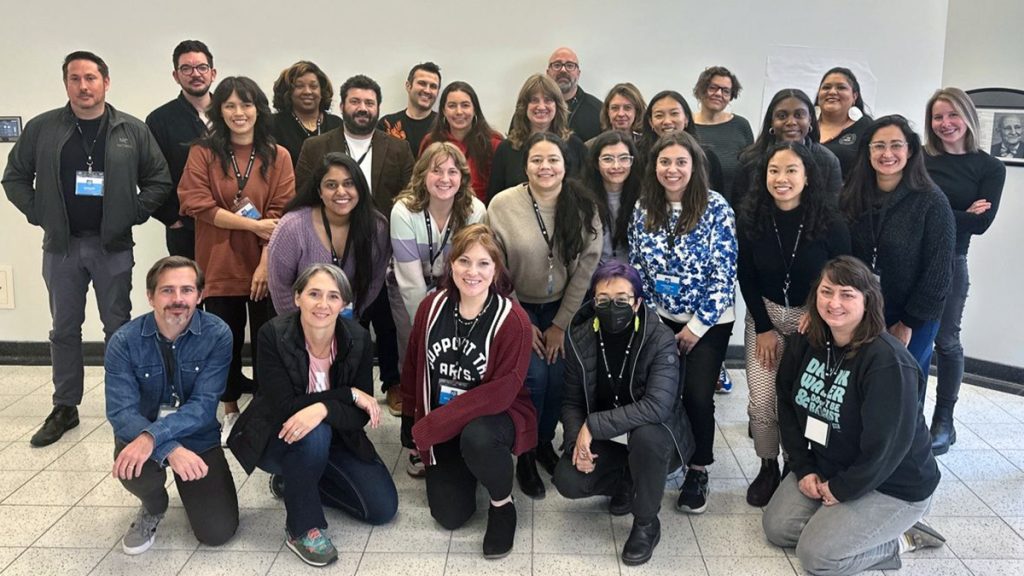
Community-Centered Symposium participants in November 2023 at the Reynolds Journalism Institute. Photo: Kat Duncan
11 Community-centered projects from newsrooms and journalists across the country
The 2023 Symposium provided opportunity and support for journalists to try at least one new-to-them idea
In November 2023, 28 journalists from community-centered newsrooms and roles across the country came together at the Reynolds Journalism Institute.
The mission of our Community-Centered Symposium is to help journalists share their challenges, build solutions, learn together, pursue new innovative ideas and build a cohort of support for the vital work they do in service to their communities. Each participant walked away from the symposium with practical and new-to-them projects they planned to tackle in their newsroom with the support of RJI and their cohort over the following months.
As we open up applications for the 2024 Symposium, we wanted to share some of the projects that came out of last year’s experience and where they are today.
Public Good News
PGN is a nonprofit newsroom dedicated to community health. We partner with trusted local voices throughout the U.S. to distribute accurate, accessible, and inclusive health news in English and Spanish.
We launched a Spanish-language biweekly WhatsApp newsletter on health news called “Hablemos de Salud” (let’s talk about health) as a way to serve Spanish-speaking communities by providing them with service-oriented information about health, and connecting with them directly to answer their questions. Their responses and questions are also meant to inform Public Good News reporting.
In the feedback we’ve gotten, we’ve heard that it’s very easy to read and it’s written in an approachable tone. The copy’s short, because there’s a character limit in WhatsApp, and we include a ton of emojis. I also include my name in the intro and format it like a text from a family member or friend. I think this has helped make it feel more approachable.
So far, we’ve learned that our readers are really interested in learning about health resources, particularly surrounding their reproductive health (including abortion rights, laws, organizations etc.) We’ve encouraged our readers to ask us questions — with the disclaimer that our answers are solely informational and not meant to substitute professional medical, legal, or financial advice — and they’ve asked us where to get information and resources about their reproductive health. We will use what we’ve learned to inform our future coverage: We’re planning to write more service-oriented stories about abortion rights, birth control, and overall reproductive rights in Spanish because this shows that our Spanish-speaking audience is interested in these topics.
We now have over 100 subscribers, and would love to keep growing! Help us subscribe or share: Just click on this link and send the message that comes up on the screen.
Shared by Valeria Ricciulli, Public Good News
Graham Media Group/WDIV-TV
WDIV-TV, the NBC affiliate in Detroit, is the market leader in news, weather, and original local programming.
We built a local news survey for seven different communities in Metro Detroit to gather community-specific feedback across the region. We’ve done many community surveys, but this is one of the first times we used first-party data to focus surveys to specific communities across the market. Dialogues linking to the surveys ran live across our digital channels targeting people based on where they lived.
We received about 500 responses across the seven surveys during the three-week period. Answers were a mix of shared stories that seemed to resonate across the region, and local responses specific to the communities. Responses gave us two insights: 1.) The feedback itself; 2.) What communities responded to surveys at higher rates. Both helped us understand who we were reaching and how we may better serve them.
As an interesting side experiment, we use GenAI to analyze the results and identify trends by region and even to generate tip sheets for reporters. Here’s a one simple summary we generated:
- The need for deeper coverage of neighborhood issues, particularly questioning why wealthy landlords receive public money for property clean-ups.
- Coverage of prices, presumably related to economic issues or specific markets.
- Issues involving crime in the city and the need for supportive measures for the homeless and animals.
- The impact of children using electronic devices excessively.
- The handling of stolen animals and their recovery, with suggestions for hefty penalties for animal surrender and abuse.
- A local official running a side business that may need to be investigated.
We learned that as broadcasters we create most stories for a regional audience. Digital tools offer a more nuanced path to connecting with audiences. It’s not surprising that users 40 miles apart would report different story ideas, but documenting and acknowledging these different info needs may be one way to deepen engagement and service. Many digital tools have the ability to target through on-site dialogues or messaging channels, including email, push, and SMS. Targeted messaging may improve your survey results and provide deeper, actionable insights.
Our targeted dialogues had a CTR (the number of clicks that your ad receives divided by the number of times your ad is shown) of 7-11%, far above engagement with ad positions on our mobile and desktop sites.
Shared by Dustin Block, Graham Media
Saco Bay News
Saco Bay News is an independent online-only news source which covers local news in the Southern Maine communities of Saco, Old Orchard Beach and Biddeford.
Under the guidance of the Innovation Team from Reynolds Journalism Institute, I launched an exclusive T-shirt to add a revenue stream. I partnered with a local artist, Nick Blunier, who created a whimsical and fun design with a coastal vibe featuring an adorable seal in the forefront and lobster boats in the background. The design is on a T-shirt, coffee cup and sticker, which are all available for purchase online at Spreadshirt. I paid Nick for his design, and a graphic artist to create the graphic, so that all the costs would be paid upfront. All sales from the items on Spreadshirt go to Saco Bay News. This was the first time Saco Bay News has offered merchandise, and it was also the first Saco Bay News has had this sort of collaboration with a local artist.
I learned that paying for a Facebook ad was not very cost effective. I got more mileage out of creating posts with local people wearing the shirt in different locations. Creating these posts occasionally helps keep up the momentum. Otherwise, I think the campaign would crash and burn a short time after launching. It also helps to wear the shirt in public. 🙂 I’m thinking maybe I could look into a local vendor to sell products with the design or think of some more ways to get the product visible in real life.
It’s been fun to see people post photos with the shirt or mug – especially people like the mayor, who has a mug in her office.
Shared by Elizabeth Gotthelf-Othot, Saco Bay News
El Tímpano
El Tímpano informs, engages, and amplifies the voices of the Bay Area’s Latino and Mayan immigrant communities.
El Tímpano’s ambassadors program will engage 8-10 highly engaged subscribers of our text message platform to provide feedback on our service journalism work and help us grow our SMS audience. The program is modeled after the promotoras — or community outreach worker — model that is a popular strategy within public health education to train community members to provide vital information to their networks of family members and friends. The cohort will meet monthly between July and December 2024, and each gathering will focus on soliciting feedback on a different aspect of El Tímpano’s work. Beyond providing valuable feedback to improve our products, participants will also gain knowledge they can bring back to their communities through media literacy and disinformation defense training led by our staff. Ambassadors will also have the opportunity to gain experience with in-person community outreach by volunteering to table at local events with our outreach team. Each participant will be compensated with a $500 gift card stipend.
Because we haven’t launched the program yet, the main feedback that’s helped shape the idea has come from our Founding Director Madeleine Bair and our Editorial Director Maye Primera, who are overseeing my work on the program. Maye encouraged me to think about ways we can educate cohort members about the connection between our texting platform and our reported journalism, a relationship which is still unclear for many in our audience. Madeleine encouraged me to think of ways we can give back to our ambassadors and ensure they get something out of the program, like building community amongst the cohort and incorporating training in media literacy and disinformation defense.
I think a short-term program like the El Tímpano ambassadors can be a helpful way to identify areas to invest more resources and time in long-term. These are some of the questions I’m hoping that our July-December cohort can help us decide when it comes to ongoing and deeper engagement with our text-messaging community.
Would they be interested in:
- More opportunities to volunteer with our outreach team at community events?
- Regular community conversations around our journalism?
- Assisting with journalism production and receiving more community media training?
- Becoming ongoing ambassadors of our text-messaging platform?
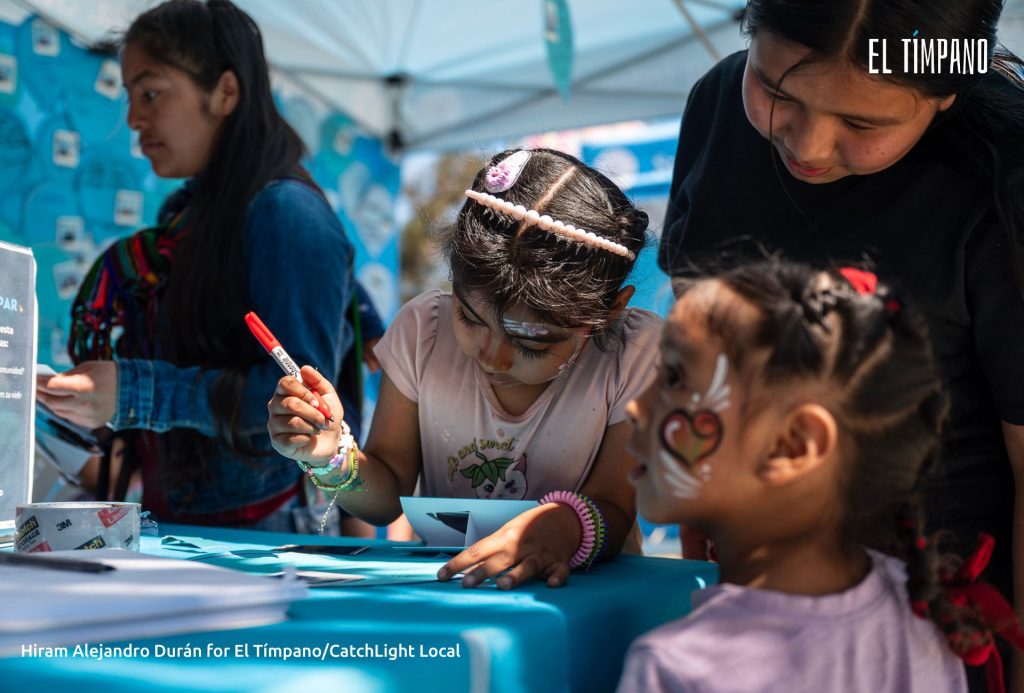
These photos are from our recent Feria de Recursos, a community resource fair I produced on April 20 to celebrate the fifth anniversary of our Spanish-language texting platform and the recent launch of our digital resource guide for Latino and Mayan immigrants in Alameda County. As part of the fair, my coworkers and I designed a participatory instant photo booth that invited attendees to share how El Tímpano’s service journalism work has impacted their daily lives. While this isn’t the same type of feedback we hope to solicit through the ambassadors program, it is still an in-person way to ask our community to reflect on our work. Also, the resource fair event was a helpful way to identify highly engaged audience members who may be interested in serving as ambassadors this summer.
Shared by Katherine Nagasawa, El Tímpano
California Health Report
The California Health Report partners with communities across the state to create solutions journalism that strives for social justice.
We created an online survey inviting parents and caregivers who are caring for children with disabilities to share their thoughts on what stories and issues they’d like to see more coverage of. We’ll use the feedback we receive to guide our future coverage. I have shared the survey with various organizations and people who work with parents or are part of parent support groups, as well as on our social media feed and in our upcoming newsletter.
We have never done a survey like this before where we directly asked for feedback and story suggestions from our readers and the disability community. I started out trying to create this survey using a paid site, SurveyMonkey. After creating the survey I realized it would cost $300 to be able to send it out the way I wanted it to look, which seemed excessive. That’s when I realized I could create a survey for free using Google Forms. I think it’s a great option for a small newsroom like ours with a limited budget.
This was a great opportunity to try something new and outside my comfort zone. Even though this survey turned out to be relatively simple to create, I don’t think it would have occurred to me to try this without the inspiration and goal-setting from the training I attended at RJI. Thanks for pushing me to go outside my comfort zone!
Claudia Boyd-Barrett, California Health Report
Shasta Scout
A non-profit, independent, civic news organization focused on Shasta County’s diverse and investigative stories.
We designed the very first Shasta Scout stickers in collaboration with some of our super fans on Instagram.This was our first time developing merchandise. We have not yet distributed the final version, but our Instagram followers weighed in on the designs with lots of excitement!
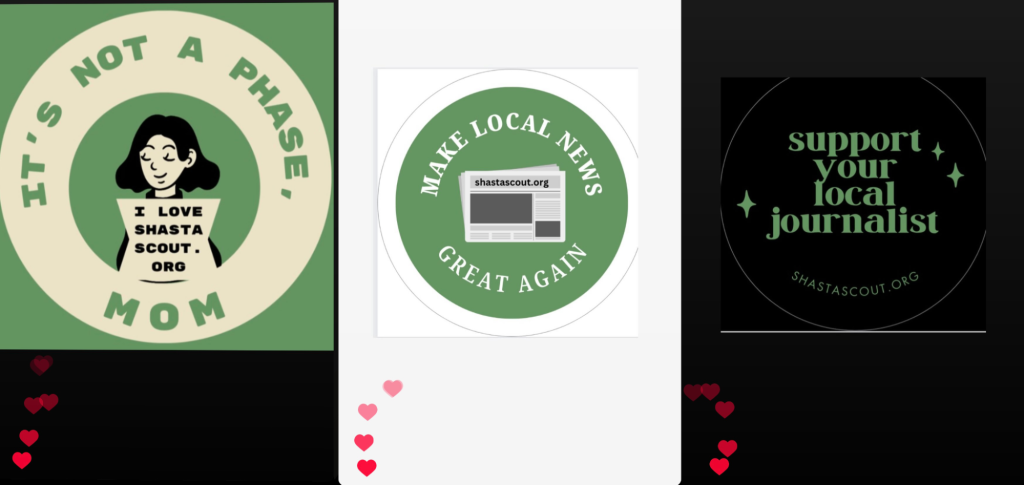
Our advice to those who want to try something new is: Just get started! The hard part was overthinking design. Once we handed the project off to a designer, it went very quickly. Costs were minimal. This is a very doable project even for a tiny newsroom like ours! We’re inspired to add more designs over time and potentially to support mini-campaigns in future.
Thank you for investing in encouraging us to innovate! I know we aren’t the first to try creating stickers but this IS the first time Shasta Scout has created a branded product and it feels DAMN good. 🙂 Wouldn’t have pushed it forward without the RJI support, including funding, deadlines, and cohort inspiration.
Shared by Annelise Pierce, Shasta Scout
Cardinal News
Cardinal News is an independent, nonprofit, nonpartisan news site that serves Southwest and Southside Virginia. Our mission is to report the untold stories of Southwest and Southside Virginia, and strengthen the voices of the people in our communities who have been sidelined in the commonwealth’s political, economic and cultural conversations simply because of where they live.
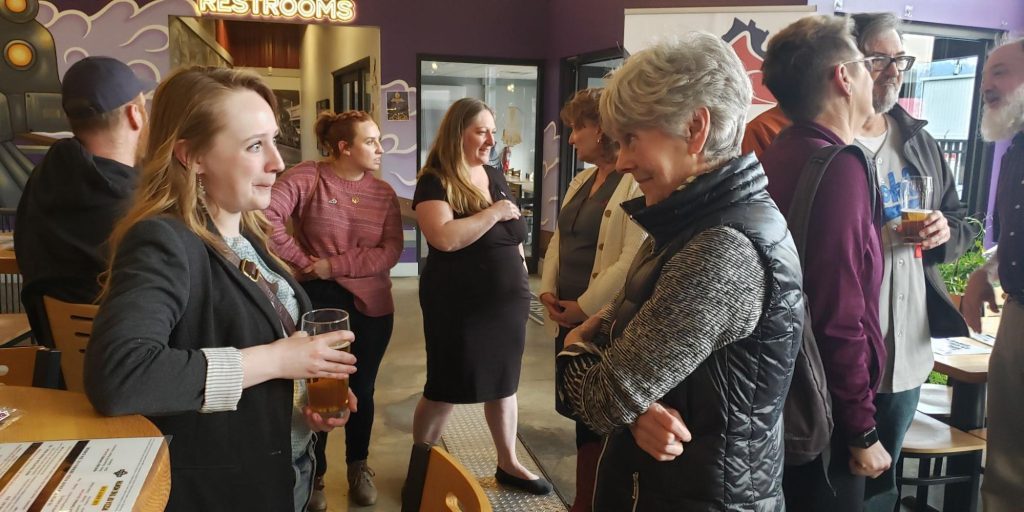
Our goal was to better connect with our readers (and our potential readers) across our vast geographic coverage area. We hosted a series of five community open houses across the region, attended by Cardinal leadership and by the reporter(s) who lived in/covered that community. Additionally, our reporters all started holding weekly or monthly office hours at local coffee shops and libraries. We built out our “connect with us” page on our website to provide a calendar listing when/where the reporters will be stationed.
While we had hosted a number of community events in the past, these previous gatherings were all very specific in their focus: guest speakers, candidate forums, etc. This series of “Cardinal Connects” open houses marked our first stab at holding drop-in events. The reporter office hours were also brand new for us.
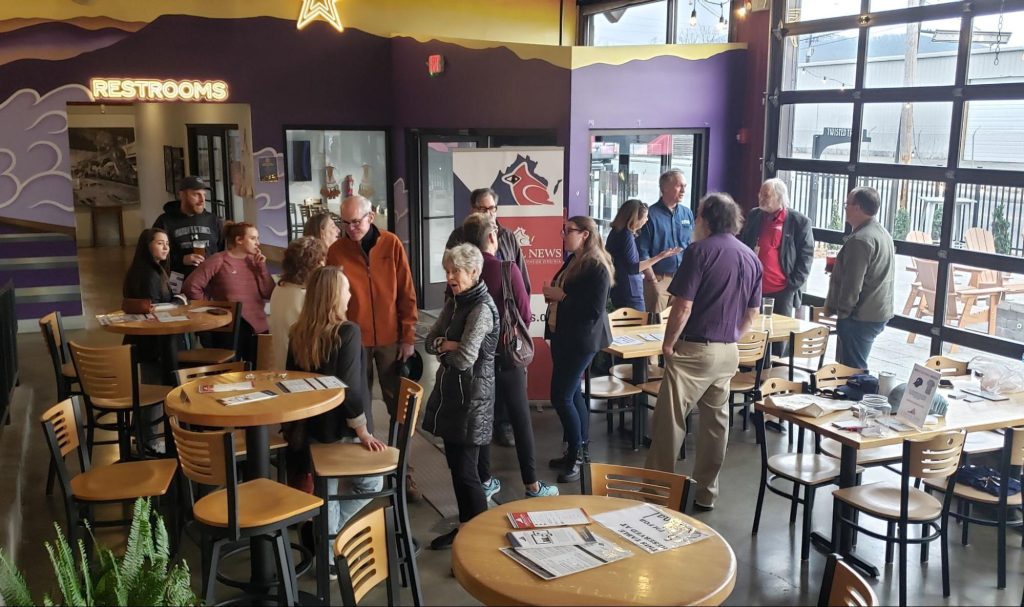
We were pleasantly surprised by the attendance at our open houses — we didn’t really know what to expect, but the events drew a great mix of local officials and readers who just wanted to meet us. We gathered some good story ideas, and we’ve gotten requests from readers in other parts of our coverage area to host similar events closer to them.
We learned that gatherings don’t have to be expensive or complicated to be effective. We partnered with coffee shops and breweries to host the events at no cost to us; the key was to hold our events during days/times when the venue would otherwise be very quiet. We paid for some coffee and beers, and we invested in small merch that we could give away to attendees (stickers, etc.). We also collected business cards for drawings for Cardinal hats.
Shared by Megan Schnabel, Cardinal News
InfoMigrants
InfoMigrants strives to supply migrants with reliable, verified, objective and balanced news and information about the countries they have left, the countries they travel through, and the countries to which they are headed. It is a collaboration led by three major European media sources: France Médias Monde (France 24, Radio France Internationale, Monte Carlo Doualiya), the German public broadcaster Deutsche Welle, and the Italian press agency ANSA.
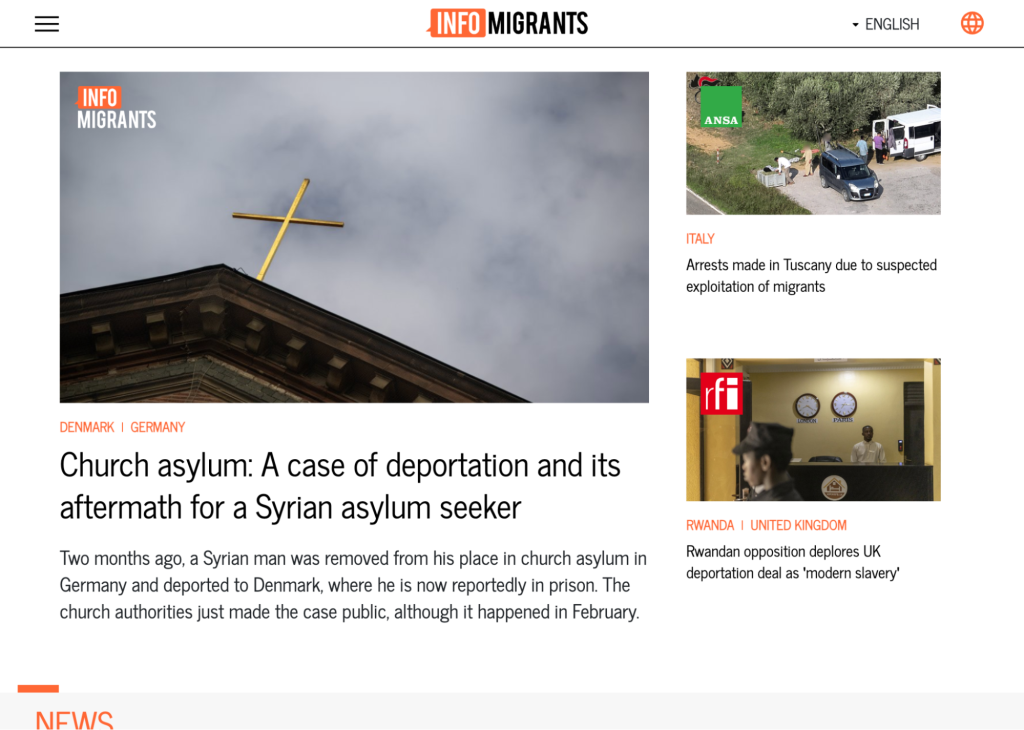
My project was to examine the migration route from France to the UK across the English Channel, as the vast majority of our reporting focuses on the Mediterranean. In particular, I wanted to learn about how the lives of migrants are saved in what is the busiest shipping route in the world.
I thought at first the newsroom would be skeptical of the idea, but they actually really liked it. They particularly were interested in the fact that RJI was willing to support this, seeing that this is so far removed from U.S. journalism. However, the first hurdle was actually receiving the funds, as we normally have to go through a major legal procurement process to shore up funding and cannot accept “donations” of any sort. But the newsroom liked the idea so much that it was willing to look into financing it directly. Then something unforeseen happened and we were hit by a major restructuring, which came out of the blue. While no jobs were lost, my role was shifted to another area, which is why the project unfortunately has not been done yet. Hopefully, in a few months’ time when the new structures are more established, I can float the idea again – even if someone else ends up completing it.
Don’t be afraid to approach your newsroom with out-of-the-box ideas. I got the complete opposite reaction to what I had expected. Also, believing in the spirit of collaboration is something that can and will inspire others.
Shared by Sertan Sanderson, InfoMigrant
The Texas Tribune
The Texas Tribune is the only member-supported, digital-first, nonpartisan media organization that informs Texans — and engages with them — about public policy, politics, government and statewide issues.
We are planning to print magnets with a QR code to evergreen election resources, such as a post about Texans’ rights at the polls. This would entail creating an evergreen series page or post on our website with links to our evergreen election-related explainers and our latest voter guide. We may also print election handouts with deadlines for the November general election and include a place for folks to write notes for when they go vote since phones aren’t allowed at the polls and a QR code that can take people to our online ballot lookup tool for the general election.
We always have online voter guides for major state and federal elections that are free for people to view and for news outlets to republish, and we sometimes create printouts and promo materials for our Texas Tribune Festival and other events. But we haven’t really explored producing printouts or promotional materials for our voter guides, which are already some of our most viewed stories by readers but which may not necessarily reach Texans who don’t regularly engage in voting and politics.
So far, we have learned from other newsrooms and Tribune projects which have used printouts to distribute information that this can be great way to make information more accessible to people who are outside of our regular readers, especially when coupled with strategic efforts to make sure the printouts are distributed directly to underserved communities and/or placed in places where they normally go or congregate, such as community centers and churches. So we’re thinking about how we can adapt that approach to a statewide level, perhaps by giving our reporters the magnets or printouts to handout where they live and/or report or by going to things like music festivals, community events and public libraries.
Shared by Maria Mendez, Texas Tribune
For my symposium project, I’ve created a survey for journalists about mental health and wellness. I’m interested in what wellness opportunities and programs for journalists across the U.S. could look like, based on responses and input. My goal here is to understand what burnout looks like, how journalists treat it and the available resources inside and outside of newsrooms, and opportunities to offer programs and resources to combat burnout and fatigue.
As part of the survey, I plan to cover 10 respondents’ memberships to one of several affinity organizations chosen, including IRE. Respondents who would like to participate will be entered into a drawing at the end of the survey for a care package including a product from New York Lavender Farm, Lavender by the Bay, and a year-long membership to one of the listed journalism organizations of their choice: Society of Professional Journalists, Investigative Reporters & Editors, The National Association of Black Journalists, National Association of Hispanic Journalists, Asian American Journalists Association, or Native American Journalists Association.
I have received 41 responses on my survey as of May 2. The deadline to complete the survey is May 30. I hope to survey at least 100-150 more journalists. 75% of respondents identify as women, 58.5% of respondents are between the ages of 25-34, and a crucial statistic: 87.8% of respondents have experienced burnout or an extended period of stress as a result of their work in this industry.
One journalist shared that: “I would love to know what other programs exist out there for journalists struggling with burnout or stress!” And others shared suggestions for budget ranges and ideas for a potential journalists retreat including: “Needs to be easy to get to, offer good food, be close to nature. Activities could include writing prompts/journaling, games and escape rooms, spa, massage, other relaxation treatments. Ziplining and ropes course!” and “I’m personally very introverted and enjoy lots of alone time, become easily overstimulated especially in a new environment, etc. An ideal retreat would offer lots of quiet / calm physical activity like kayaking and hiking, in groups for safety but with the ability / option to engage as much or as little as needed. Also I have a lot of dietary restrictions so that would need to factor in.”
I feel even more motivated to continue this work with the help of others also interested in bettering the mental health of our journalist colleagues after learning from the respondents who participated in this survey.
Shared by Sarah Belle Lin, Independent
Fort Worth Report
The Fort Worth Report is a 501(c)(3) organization that launched April 12, 2021. This new media outlet is built on a foundation of local leadership and local investment. It provides community-sourced journalism that exclusively supports and reports on the Fort Worth community with fact-based, thoughtful and contextual coverage without bias or predetermined agendas.
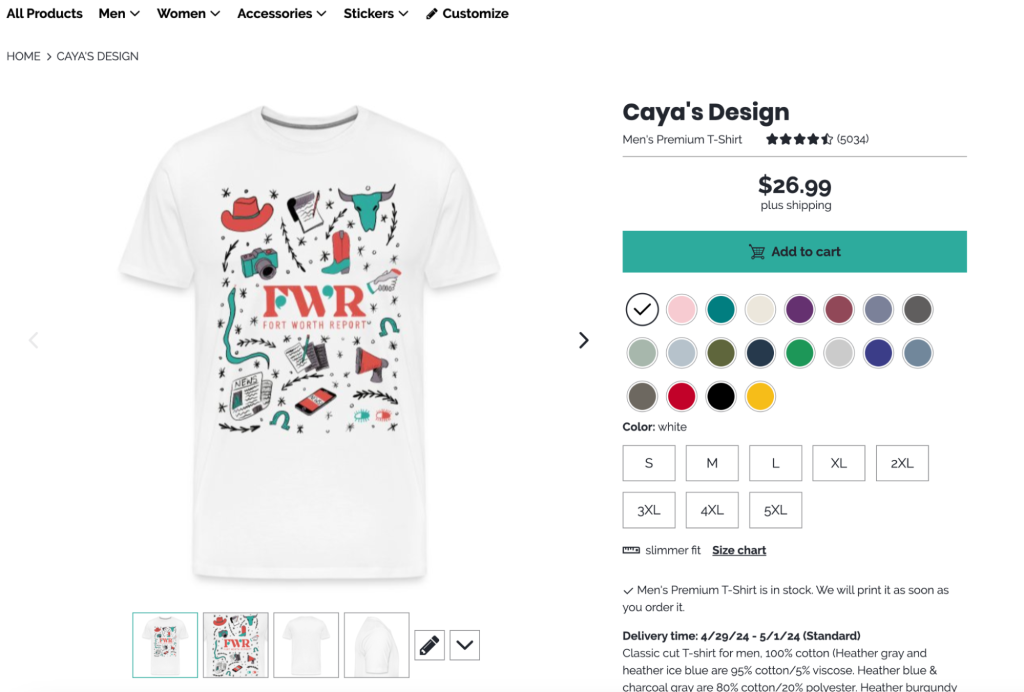
Our newsroom partnered with a local emerging artist to design a T-shirt for our staff and our readers. To find an artist, I asked our arts editor for suggestions. She had previously featured Caya, our selected artist, in one of her profiles the previous year. The design process was the lengthiest part of the process. I had a one-on-one meeting with Caya to discuss our vision for the design, and then through several rounds of edits and brainstorming to finalize the design. We sent Caya a contract and ensured that all payments were received in a timely manner. Once the design was finalized, we used a print on demand service to purchase T-shirts for our staff. Our staff wore these shirts to our third year in business celebration, and were frequently asked by guests where they could purchase one.
We also used a newsletter topper written by our arts editor in our flagship product to advertise our new T-shirts as well as generate revenue for our newsroom. Our profit margin is about $6 a shirt.
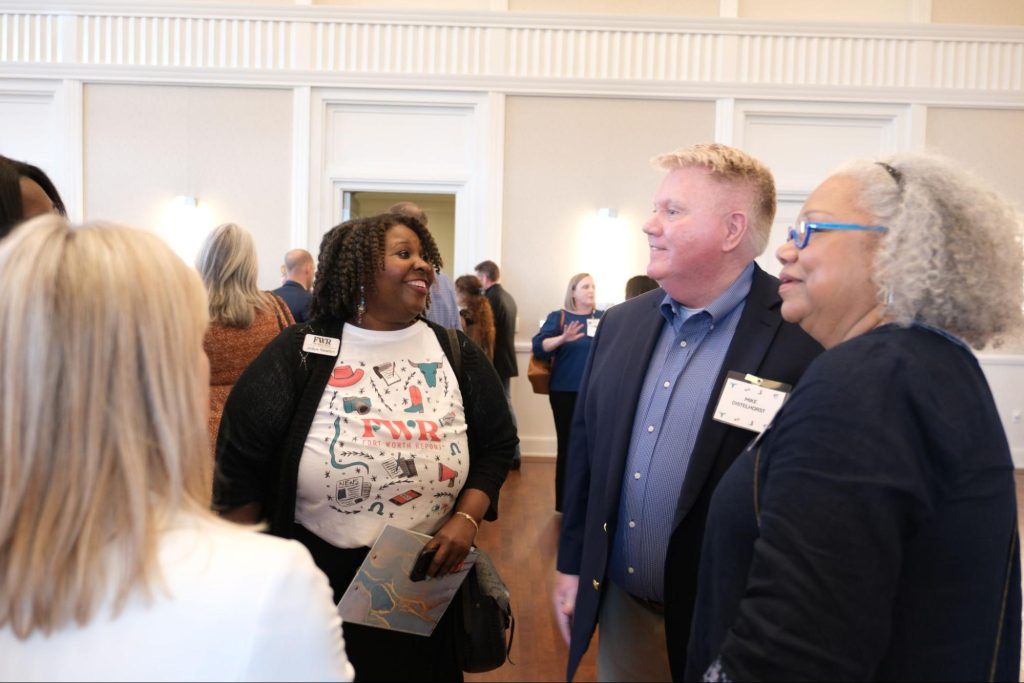
We had an existing merchandise store before working with Caya, but the designs were rudimentary — they were simply our logo slapped on various pieces of merchandise. This was the first time my newsroom had a thoroughly fleshed-out idea for a design that led to a real product.
We learned that working with a local artist can be very fulfilling. I would advise other newsrooms/journalists to try to work with an artist that they already know or have a connection with. (A couple of other newsrooms who did this project with RJI that took this approach.) Another piece of advice would be to have a dedicated project manager — if it’s everyone’s responsibility, it’s no one’s responsibility.
Shared by Jamese Branch, Fort Worth Report
These summaries have been edited for length and clarity.
Cite this article
Duncan, Kat (2024, May 7). 11 Community-centered projects from newsrooms and journalists across the country. Reynolds Journalism Institute. Retrieved from: https://rjionline.org/news/11-community-centered-projects-from-newsrooms-and-journalists-across-the-country/

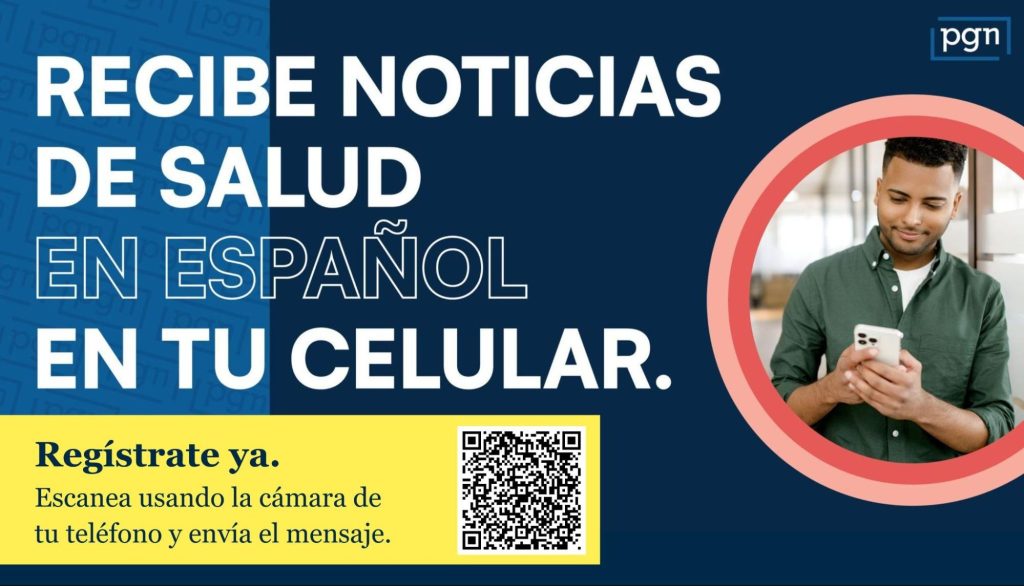
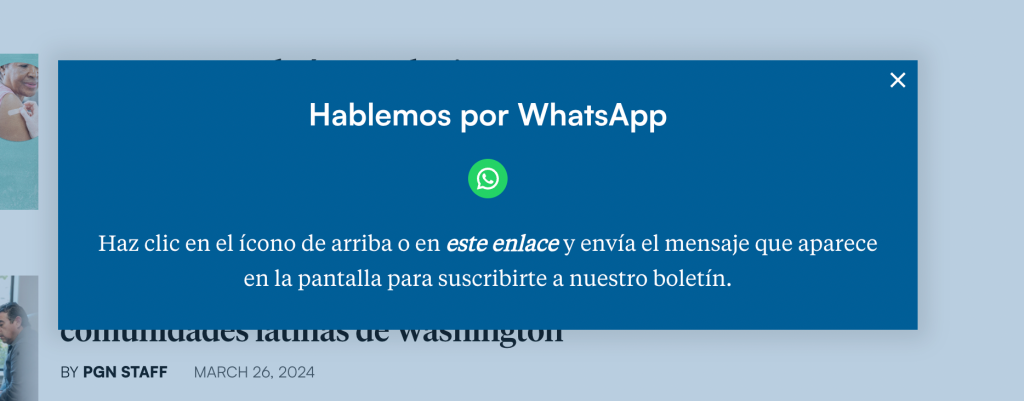
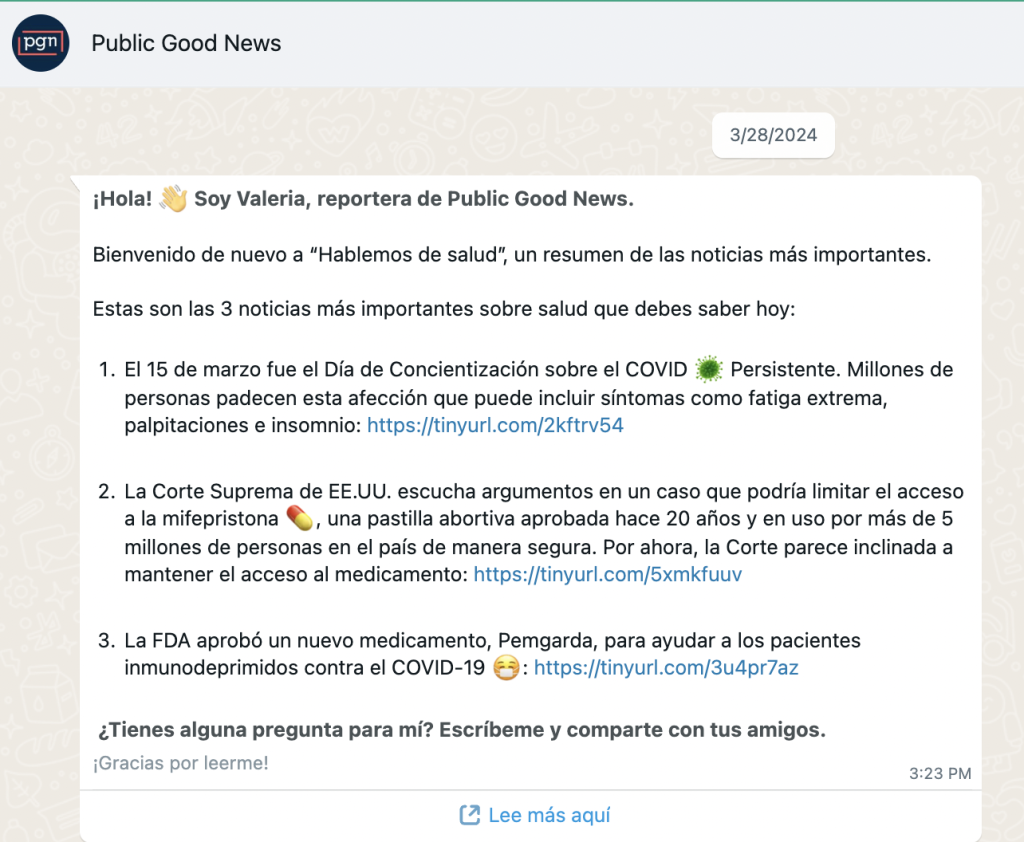
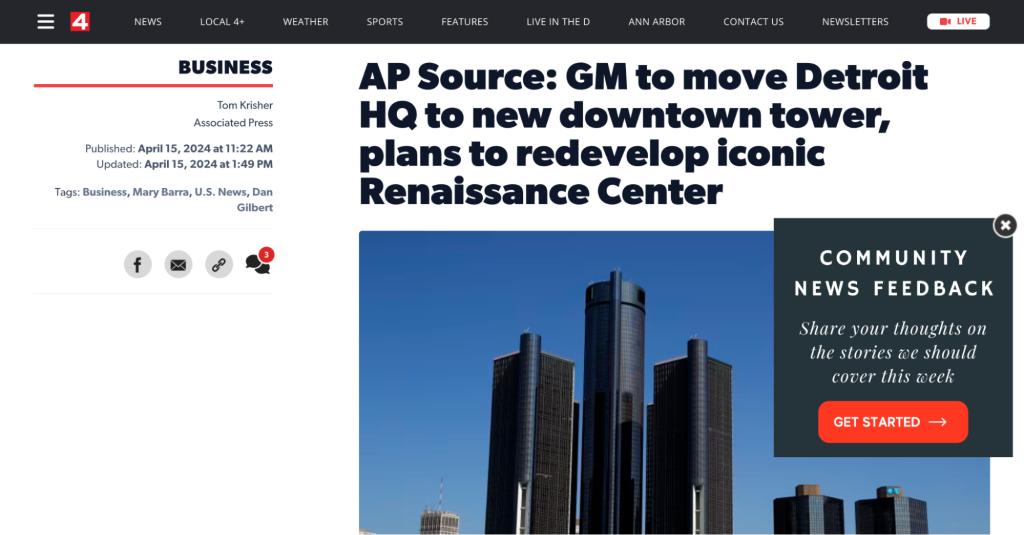
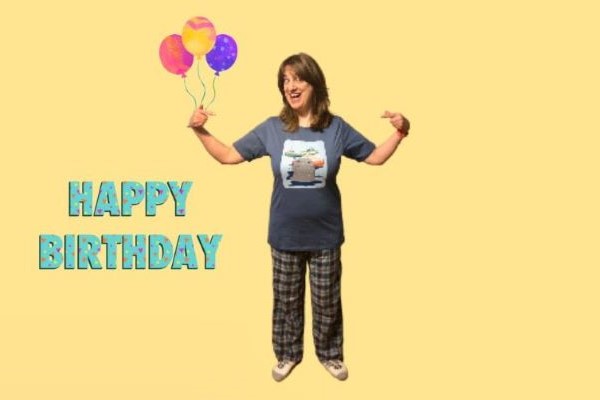
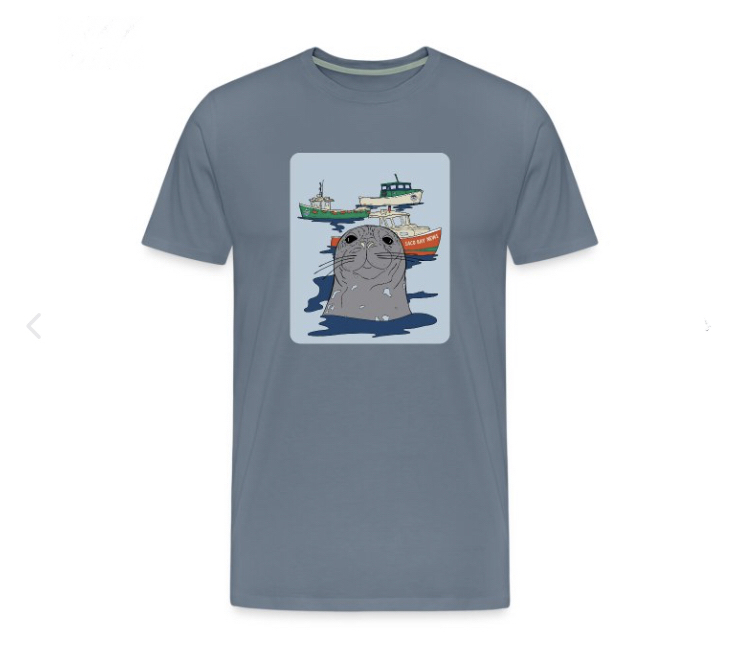
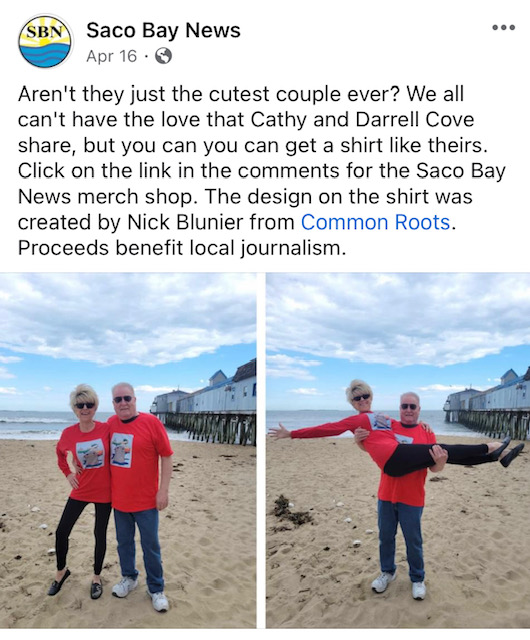
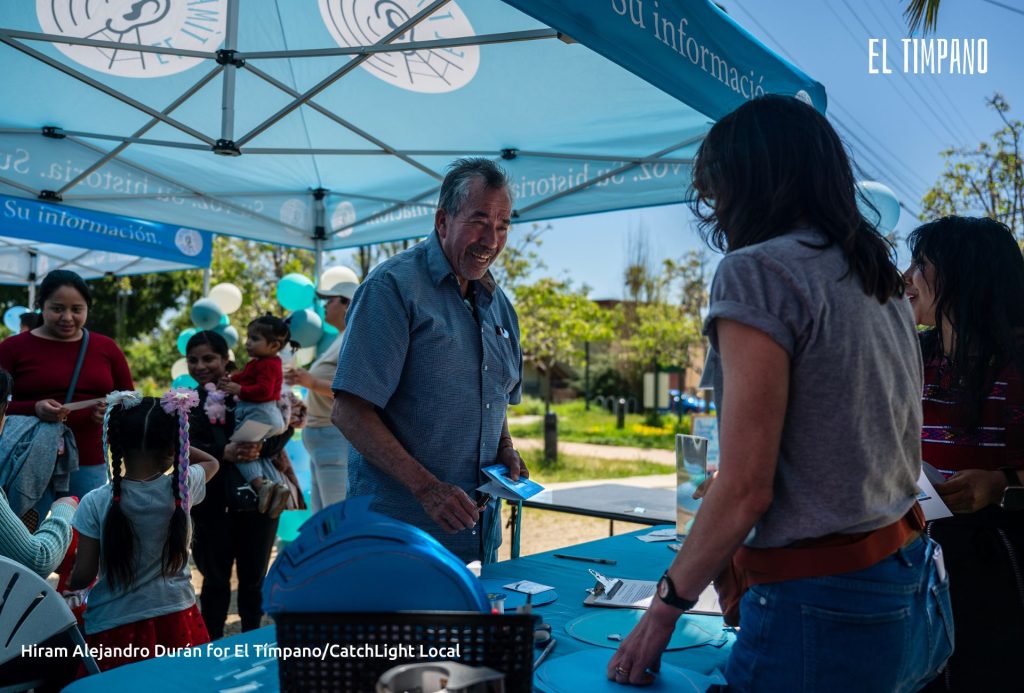
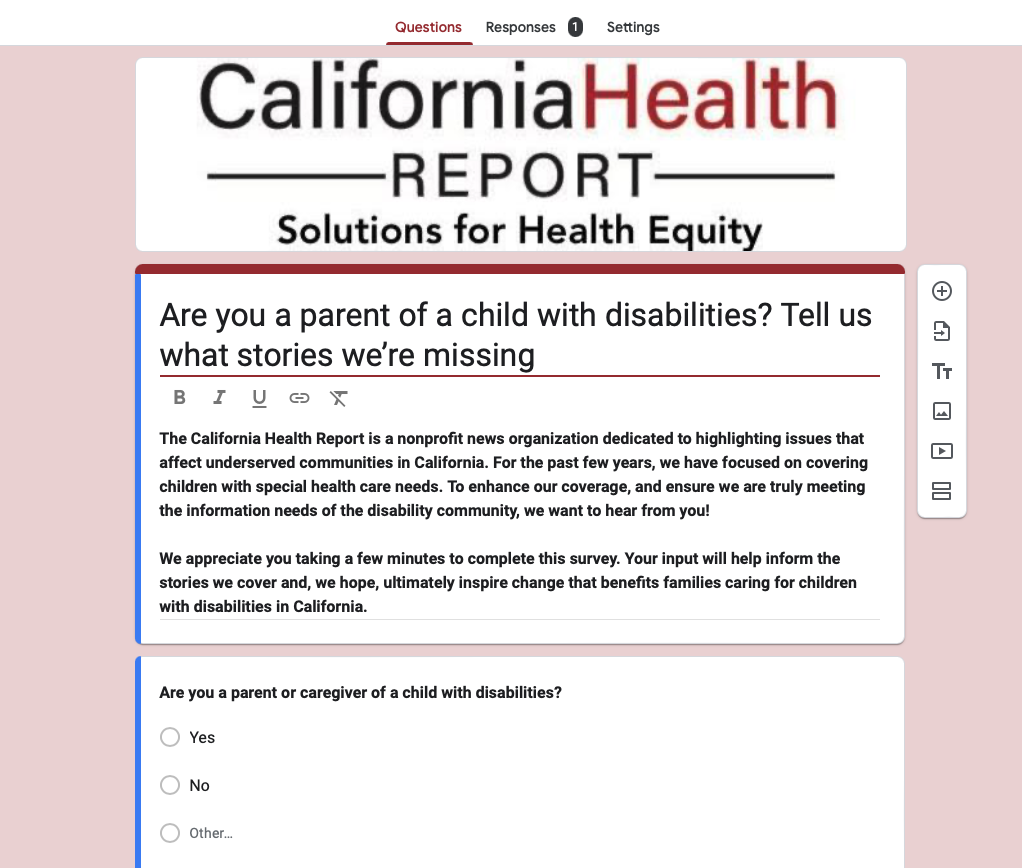
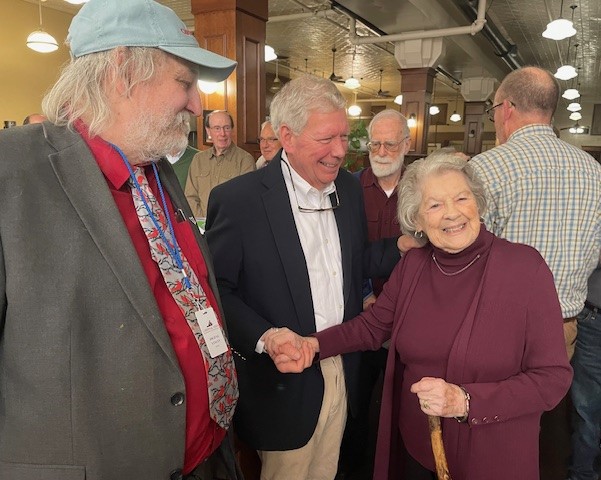

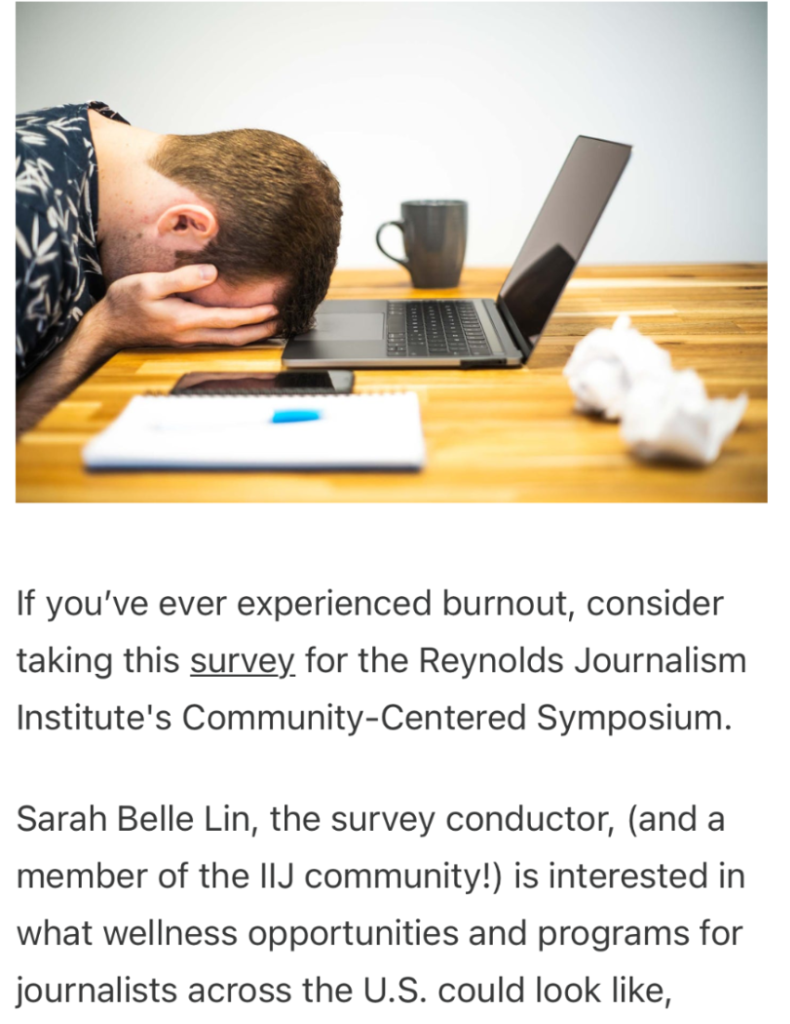
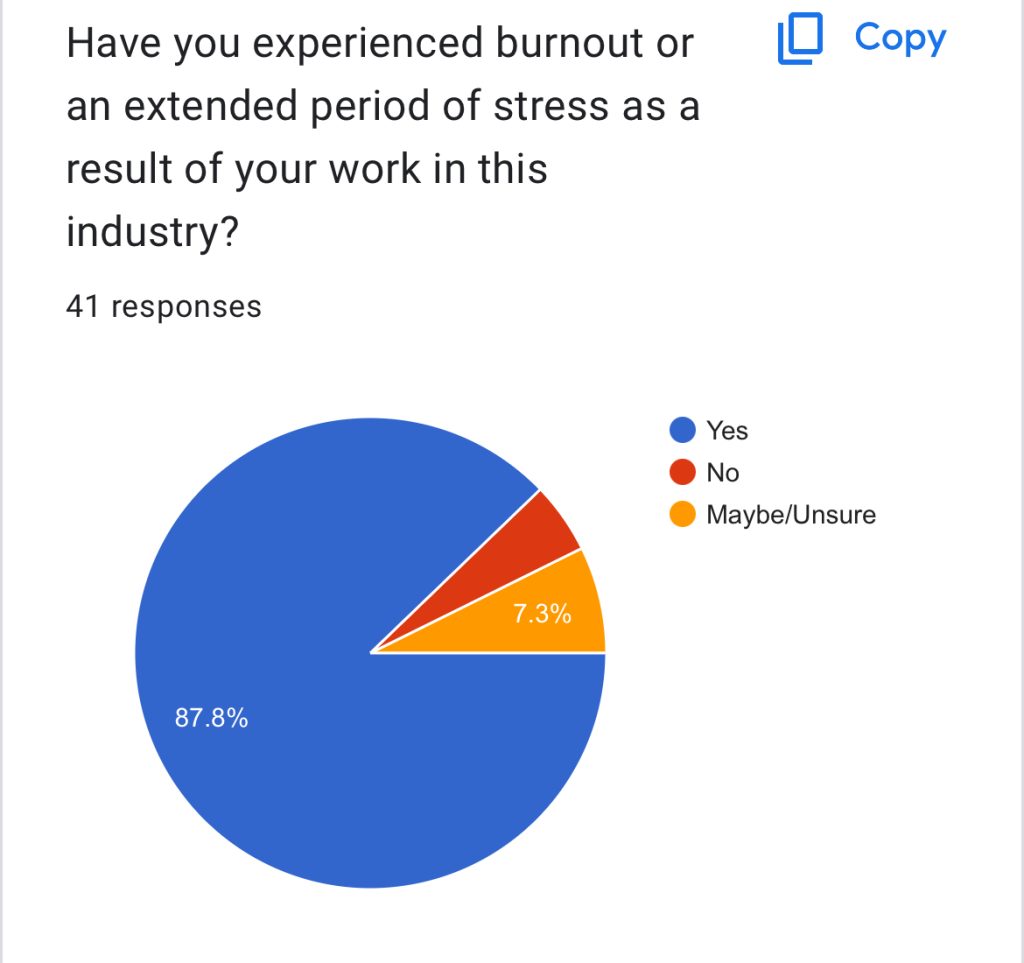
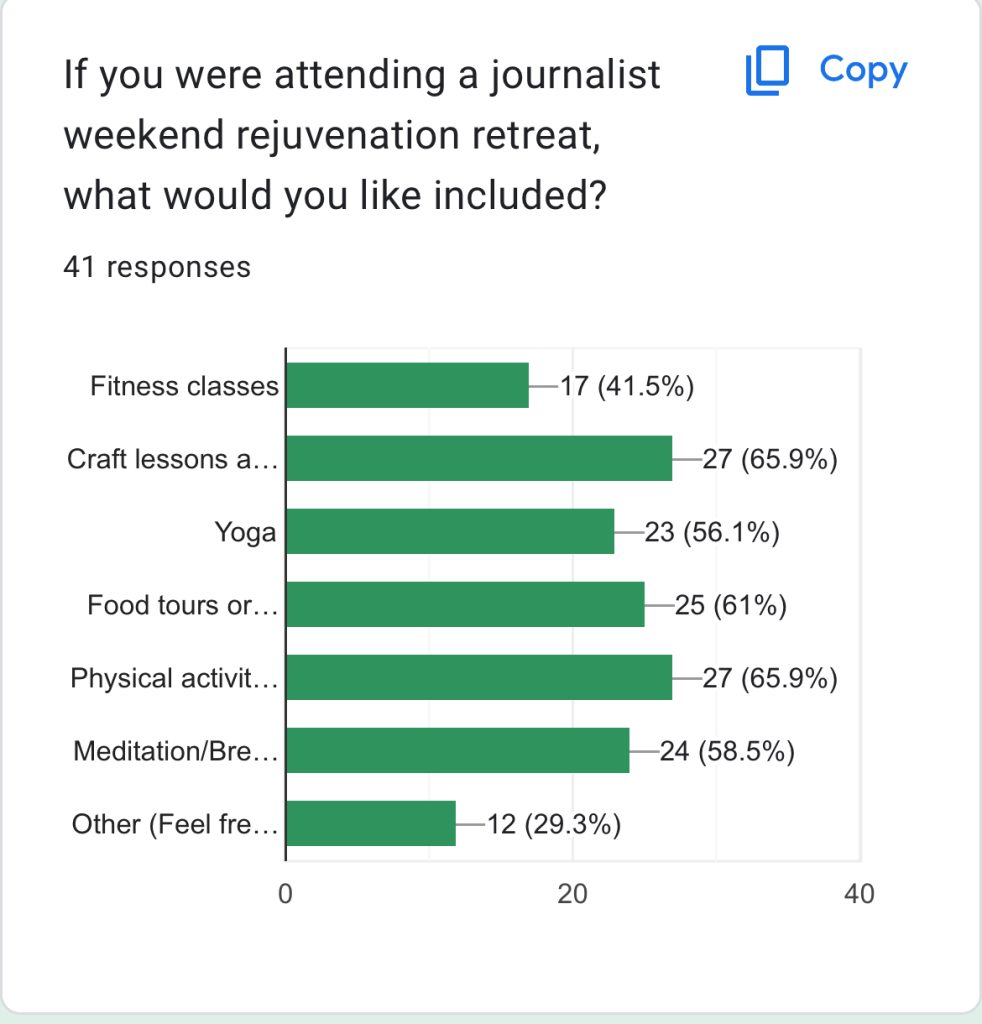
Comments